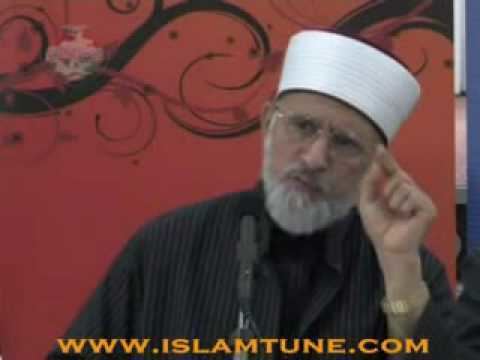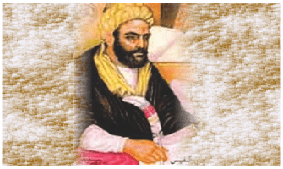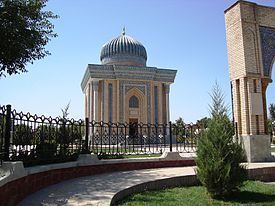Name Abu al-Maturidi | ||
 | ||
Fields Theology, Tafsir, Fiqh, Sharia | ||
Imam Abu Hanifa oder Imam al Maturidi Abu Mansur al Maturidi 9 11
Universiti Kehidupan Ep 13 (Abu Mansur Al Maturidi)
Abū Manṣūr Muḥammad b. Muḥammad b. Maḥmūd al-Samarḳandī (853-944 CE; Persian: محمد بن محمد بن محمود أبو منصور ماتریدی سمرقندی حنفی), often referred to as Abū Manṣūr al-Māturīdī for short, or reverently as Imam Māturīdī by Sunni Muslims, was a Sunni Hanafi jurist, theologian, and scriptural exegete from ninth-century Samarkand who became the eponymous codifier of one of the principal orthodox schools of Sunni theology, the Maturidi school, which became the dominant theological school for Sunni Muslims in Central Asia and later enjoyed a preeminent status as the school of choice for both the Ottoman Empire and the Mughal Empire.
Contents
- Imam Abu Hanifa oder Imam al Maturidi Abu Mansur al Maturidi 9 11
- Universiti Kehidupan Ep 13 Abu Mansur Al Maturidi
- Name
- Life
- Theology
- Work
- Legacy and veneration
- Writings
- References

In contrast to Ashʿarī (d. 936), the founder of one of the other major orthodox Sunni theological schools, Maturidi adhered to the doctrine of Abū Ḥanīfa (d. 772) as transmitted and elaborated by the Hanafi theologians of Balkh and Transoxania. It was this theology which Maturidi systematized and used to refute not only the opinions of the Mutazilites, the Karrāmites, and other heterodox groups among the Sunnis, but also non-Muslim theologies such as those of Chalcedonian Christianity, Miaphysitism, Manichaeanism, Marcionism, and Bardaisanism.

Name

Maturidi's epithet or nisba refers to Māturīd (or Māturīt), a locality in Samarkand.
Life

We know fairly little about the life of Maturidi, as the sources available "do not read as biographies, but rather as lists of works that have been enlarged upon by brief statements on his personage and a few words of praise." What is evident, however, is that the theologian lived the life of a pure scholar, as "nothing indicates that he held any public office, nor that he possessed more disciples, popularity, or association with the Sāmānid court of Bukhārā than anyone else." It is accepted, moreover, that Maturidi had two principal teachers, namely Abū Bakr al-Jūzjānī and Abū Naṣr Aḥmad b. al-ʿAbbās al-ʿIyāḍī (d. ca. 874-892), both of whom played significant roles in the shaping of Maturidi's theological views. Maturidi is said to have lived the life of an ascetic (zāhid), and various sources even attribute numerous miracles (karāmāt) to him. Although not technically a religious mystic in any real sense, it is nevertheless very possible that Maturidi had some interaction with the Sufis of his area, as "Hanafite theology in the region could not always be sharply separated from mystical tendencies," and many of the most important Hanafi jurists of the area were also Sufi mystics.
Theology

Maturidi defined faith (īmān) as taṣdīḳ bi ’l-ḳalb or "inner assent, expressed by verbal confession (ịḳrār bi ’l-lisān)." For Maturidi, moreover, works (aʿmāl) are not a part of faith. Additionally, Maturidi held that "faith cannot decrease nor increase in substance, though it may be said to increase through renewal and repetition."
Maturidi supported using allegorical interpretation with respect to the anthropomorphic expressions in the Quran, though he rejected many of the interpretations the Mutazilites would reach using this method. In other instances, Maturidi espoused using the traditionalist bilā kayf method of reading scripture, which insisted on "unquestioning acceptance of the revealed text." Maturidi further refuted the Mutazilites in his defense of the Attributes of God "as real and eternally subsisting" in the Essence of God (ḳāʾima bi ’l-d̲h̲āt). His chief theological divergence from Ashʿarī was that he held the attributes of essence and action to be "equally eternal and subsistent in the Divine Essence." Thus, "he insisted that the expressions 'God is eternally the Creator' and 'God has been creating from eternity (lam yazal k̲h̲āliḳan)' are equally valid, even though the created world is temporal." Furthermore, Maturidi staunchly defended the Beatific Vision (ruʾya, literally "vision [of God]") against the Mutazilites, but "consistently rejected the possibility of idrāk, which he understood as grasping, of God by the eyes."
Work
When Maturidi was growing up there was an emerging reaction against some schools within Islam, notably Mu'tazilis, Qarmati, and Shi'a. The Sunni scholars were following Abu Hanifa. Maturidi, with other two preeminent scholars, wrote especially on the creed of Islam and elaborated Abu Hanifa's doctrine, the other two being Abu al-Hasan al-Ash'ari in Iraq, and Ahmad ibn Muhammad al-Tahawi in Egypt.
While Al-Ash'ari and Al-Tahawi were Sunni together with Maturidi, they constructed their own theologies diverging slightly from Abu Hanifa's school. Al-Ash'ari, enunciated that God creates the individual's power (qudra), will, and the actual act giving way to a fatalist school of theology, which was later put in a consolidated form by Al Ghazali. Maturidi, followed in Abu Hanifa's footsteps, and presented the "notion that God was the creator of man’s acts, although man possessed his own capacity and will to act". Maturidi and Al-Ash'ari also separated from each other in the issue of the attributes of God, as well as some other minor issues.
Later, with the impact of Persianate states such as Great Seljuq Empire and Ottoman Empire, Hanafi-Maturidi school spread to greater areas where the Hanafi school of law is prevalent, such as Afghanistan, Central Asia, South Asia, Balkan, Russia, China, Caucasus and Turkey.
Maturidi had immense knowledge of dualist beliefs (Sanawiyya) and of other old Persian religions. His Kitāb al-Tawḥīd in this way has become a primary source for modern researchers with its rich materials about Iranian Manicheanism (Mâniyya), a group of Brahmans (Barähima), and some controversial personalities such as Ibn al-Rawandi, Abu Isa al-Warraq, and Muhammad b. Shabib.
Legacy and veneration
Although there was in the medieval period "a tendency to suppress Maturidi's name and to put Ashʿarī forward as the champion of Islam against all heretics," except in Transoxiana, Maturidism gradually "came to be widely recognised as the second orthodox Sunni theological school besides" Ashʿarīsm. It is evident from the surviving fifteenth-century accounts of Maturidi's tomb in the cemetery of Jākardīza in Samarkand that the theologian's tomb was "visited ... and held in honor for a long time" throughout the medieval period. This veneration of the theologian seems to have arisen out of traditions preserved by several later scholars which detailed Maturidi's wisdom and spiritual abilities. For example, Abul Muīn al-Nasafī (d. 1114) stated that Maturidi's spiritual gifts were "immeasurably plentiful" and that "God singled him out with miracles (kāramāt), gifts of grace (mawāhib), divine assistance (tawfiq), and guidance (irshād, tashdīd)."
Contemporary Salafism and Wahhabism, however, tends to be very critical of Maturidi's legacy in Sunni Islam due to their aversion towards using any rational thought in matters of theology, which they deem to be heretical, despite this antagonism being a position that conflicts with the consensus of Sunnism throughout history. As such, it is often said that mainstream "orthodox Sunnism" constitutes the followers of the theological traditions of Maturidi and Ashʿarī, while Salafism and Wahhabism have often been interpreted by the proponents of the two major schools to be minority splinter theological traditions opposed to the mainstream. Furthermore, the minor theoretical differences between the theological formulations of Maturidi and Ashʿarī are often deemed by their respective followers to be superficial rather than real, whence "the two schools are equally orthodox" in traditional Sunnism. The traditional Sunni point of view is summarized in the words of the twentieth-century Islamic publisher Munīr ʿAbduh Agha, who stated: "There is not much [doctrinal] difference between the Ashʿarīs and Māturīdīs, hence both groups are now called People of the Sunna and the Community."
